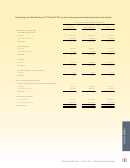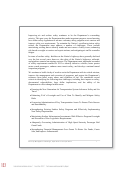Performance And Accountability Report - Fiscal Year 2013 - Federal Aviation Administration - U.s. Department Of Transportation Page 36
ADVERTISEMENT
 1
1  2
2  3
3  4
4  5
5  6
6  7
7  8
8  9
9  10
10  11
11  12
12  13
13  14
14  15
15  16
16  17
17  18
18  19
19  20
20  21
21  22
22  23
23  24
24  25
25  26
26  27
27  28
28  29
29  30
30  31
31  32
32  33
33  34
34  35
35  36
36  37
37  38
38  39
39  40
40  41
41  42
42  43
43  44
44  45
45  46
46  47
47  48
48  49
49  50
50  51
51  52
52  53
53  54
54  55
55  56
56  57
57  58
58  59
59  60
60  61
61  62
62  63
63  64
64  65
65  66
66  67
67  68
68  69
69  70
70  71
71  72
72  73
73  74
74  75
75  76
76  77
77  78
78  79
79  80
80  81
81  82
82  83
83  84
84  85
85  86
86  87
87  88
88  89
89  90
90  91
91  92
92  93
93  94
94  95
95  96
96  97
97  98
98  99
99  100
100  101
101  102
102  103
103  104
104  105
105  106
106  107
107  108
108  109
109  110
110  111
111  112
112  113
113  114
114  115
115  116
116  117
117  118
118  119
119  120
120  121
121  122
122  123
123  124
124  125
125  126
126  127
127  128
128  129
129  130
130  131
131  132
132  133
133  134
134  135
135  136
136  137
137  138
138  139
139  140
140  141
141  142
142  143
143  144
144  145
145  146
146  147
147  148
148  149
149  150
150 Budgetary Integrity: FAA Resources and
international, medical, engineering, and development programs,
as well as for policy oversight and overall management functions.
How They Are Used
In FY 2013, the AATF provided approximately 71 percent of our
The FY 2013 Operations appropriation was $9.2 billion, which
enacted budgetary authority. Created by the Airport and Airway
was augmented by a $.2 billion transfer from AIP, for a total
Revenue Act of 1970, the AATF derives its funding from excise
funding level of $9.4 billion, approximately 3 percent less
taxes and earned interest. It provides a source of revenue to
than in FY 2012. This decrease is primarily attributable to the
finance investments in the airport and airway system, and covers
sequestration resulting from the Budget Control Act of 2011,
a portion of the FAA operating costs.
offset by the transfer into Operations enabled by the Reducing
Flight Delays Act.
1
Aviation excise taxes, which include taxes on domestic
passenger tickets, freight waybills, general and commercial
AIP.
The Secretary of Transportation is authorized to award
aviation fuel, and international departures and arrivals, are
grants for planning and development to maintain a safe and
deposited into the AATF. The U.S. Department of the Treasury
efficient nationwide system of public airports. These grants fund
maintains the AATF and invests in government securities.
approximately one third of all capital development at the nation’s
public airports. Grants are issued to maintain and enhance airport
Interest earned is deposited into the AATF. Funding is withdrawn
safety, preserve existing infrastructure, and expand capacity and
as needed and transferred to each FAA appropriation budget line
efficiency throughout the system. The program also supports
to cover obligations.
noise compatibility and planning, the military airport program,
reliever airports, and airport program administration.
We are financed through annual and multiyear appropriations
authorized by Congress. The FY 2013 enacted budget of $15.3
FY 2013 funding for AIP was $3.343 billion. Funding for the Small
billion was a decrease from the FY 2012 enacted level of $15.9
Community Air Service Development program was $5.9 million.
billion. This included $10.9 billion from the AATF and $4.4 billion
from the General Fund, as enacted by the Consolidated and
F&E.
The programs funded by the F&E appropriation are our
Further Continuing Appropriations Act, 2013.
principal means of modernizing and improving air traffic control
and airway facilities, particularly through programs supporting
The FAA has four appropriations. The largest, Operations, is
NextGen. The account finances major capital investments to
funded by both the Treasury’s General Fund and the AATF. In
enhance the safety and capacity of the nation’s airspace. F&E
FY 2013, the AATF provided 53.7 percent of the revenue for
was funded at $2.62 billion in FY 2013, a 4 percent decrease from
Operations. The AATF is the sole revenue source for our three
FY 2012. This funding included $28.5 million from the Hurricane
capital investment appropriations:
Sandy Supplemental Bill and a transfer of $5.8 million into
Grants-in-Aid for Airports (AIP)
¢
F&E enabled by the Reducing Flight Delays Act. Several major
systems that contribute to the NextGen effort reached significant
Facilities and Equipment (F&E)
¢
milestones in FY 2013.These include: Automatic Dependent
Research, Engineering, and Development (R,E,&D).
¢
Surveillance-Broadcast (ADS-B), Data Communications for
Trajectory-Based Operations (Data Comm), and En Route
Operations.
The Operations appropriation finances operating
Automation Modernization (ERAM).
costs, maintenance, communications, and logistical support
for the air traffic control and air navigation systems. It also
R,E,&D.
The FY 2013 appropriation for R,E,&D of $158.79 million
funds the salaries and costs associated with carrying out our
was about 5 percent lower than the FY 2012 level. The reduction
safety inspection and regulatory responsibilities. In addition,
for FY 2013, was again primarily attributable to the sequester.
the account covers administrative and managerial costs for our
1 FY 2013’s Reducing Flight Delays Act (P.L. 113-9) enabled a $253 million
expenditure transfer from Grants-In-Aid for Airports to Operations and
Facilities & Equipment.
34
|
|
Federal Aviation Administration
Fiscal Year 2013
Performance and Accountability Report
ADVERTISEMENT
0 votes
Related Articles
Related forms
Related Categories
Parent category: Business









